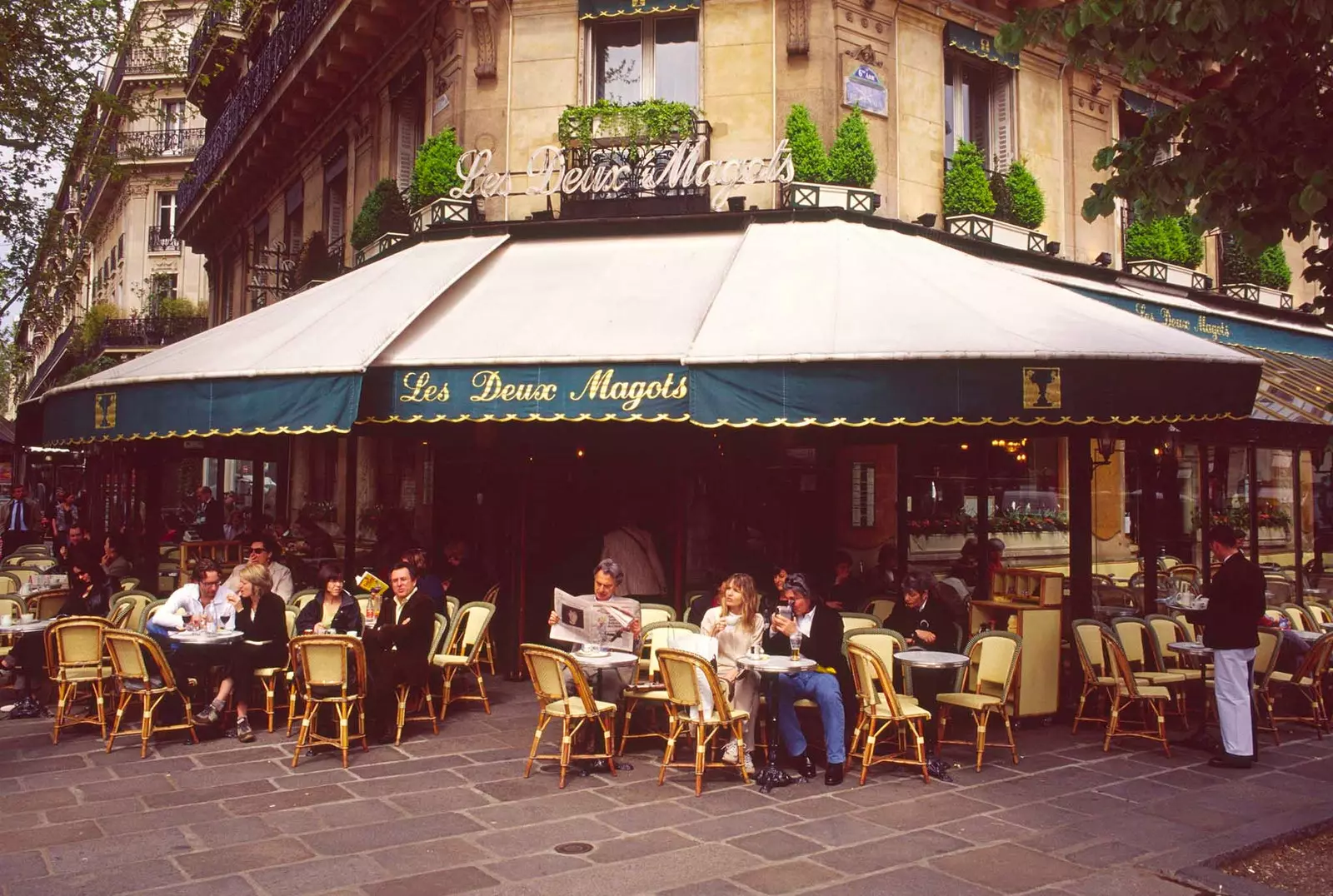
Les Deux Magots
Play at being poets, Parisians or tourists, immerse yourself in the spirit of Parisian cafes steeped in history; taste a _ crème _, scribble ideas on a Moleskine, write, read, flâner, dream and travel through his memory. These literary cafes have been shining for decades on the left bank of the Seine, full of magic and memories of the characters who frequented them and who have marked times.
THE DEUX MAGOTS , 6 Place Saint-Germain-des-Pres, 75006
This historic café from 1885 was a meeting place for Rimbaud, Verlaine and Stephane Mallarmé. Bought by Auguste Boulay in 1914, it has remained in the family ever since.
Starting in the 1920s, it became an artistic and intellectual spot in which they rub shoulders Foujita, Jean Giraudoux, Picasso and Fernand Leger or foreigners James Joyce and Nabokov. In addition, it is witness to the birth of currents of thought such as surrealism or existentialism around Jean-Paul Sartre and Simone de Beauvoir.
Such is their literary footprint that, in 1933, they created the reward Deux Magots . Currently, the place offers exhibitions; talks in the Lundi des Ecrivains and concerts in Jeudis Du Jazz.
In its living room, the two oriental magot figures, which give it its name, are preserved, Sky's red stools and mahogany tables, and the waiters dress as they did then.
Today, his clientele is an unlikely amalgam of foreigners, actors and assiduous neighbors who are tempted by its succulent selection of cakes by **Pierre Hermé.**
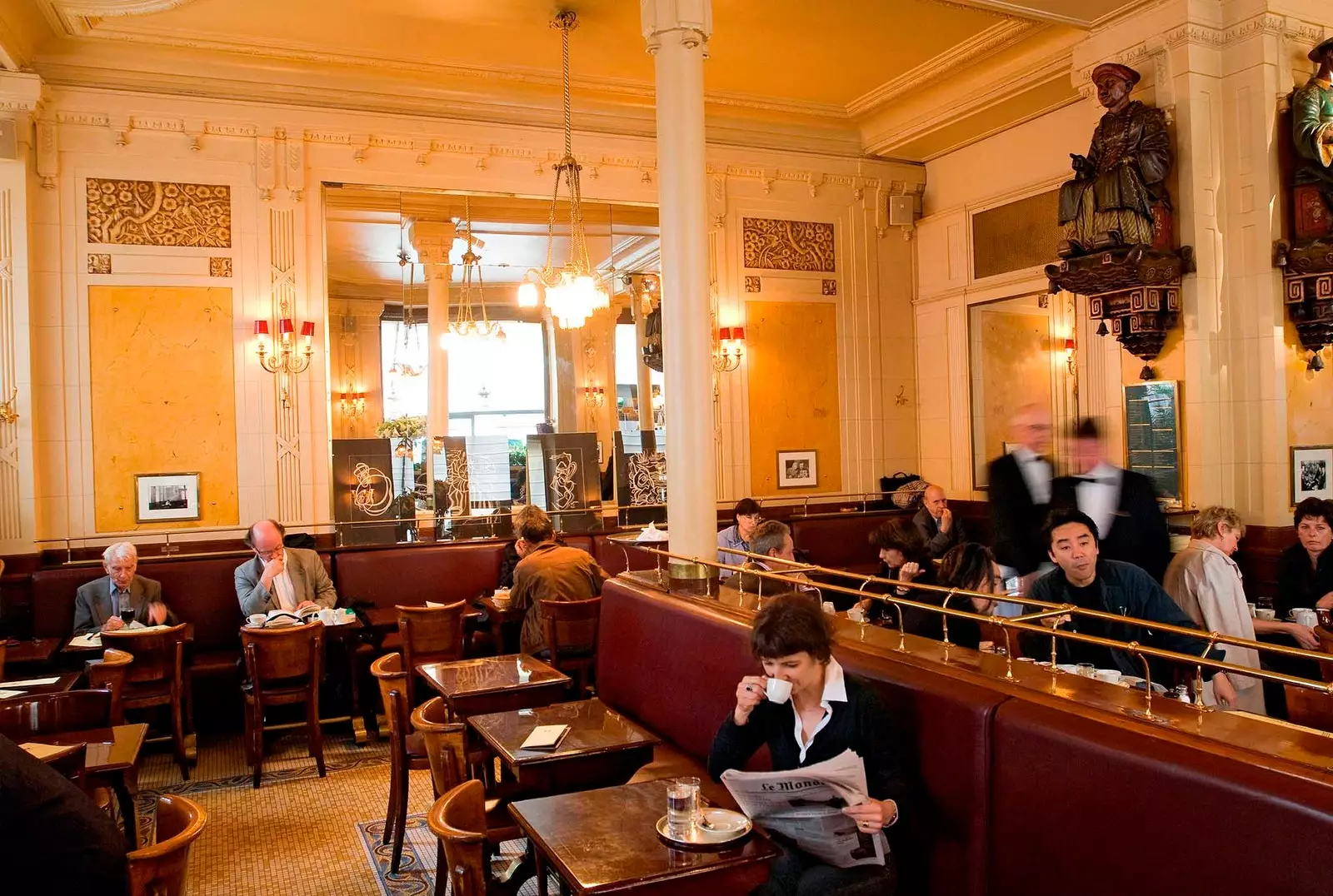
Interior of Les Deux Magots
THE COFFEE OF FLOWER , 172 Boulevard Saint-Germain, 75006
This café in Saint-Germain-des-Prés, which owes its name to a sculpture of the deity that stood on the boulevard, is one of the most ancient and prestigious from the city.
It was born in 1887, and became the meeting point for literary meetings and philosophical debates with Maurras and Apollinaire. In the 1930s, it was the meeting point of literary and artistic Paris where Georges Bataille, Robert Desnos, Giacometti, Zadkine, Picasso …
Françoise Sagan and Boris Vian make it their headquarters, and subsequently, a new intellectual elite emerges, including the existentialist couple. Jean-Paul Sartre and Simone de Beauvoir.
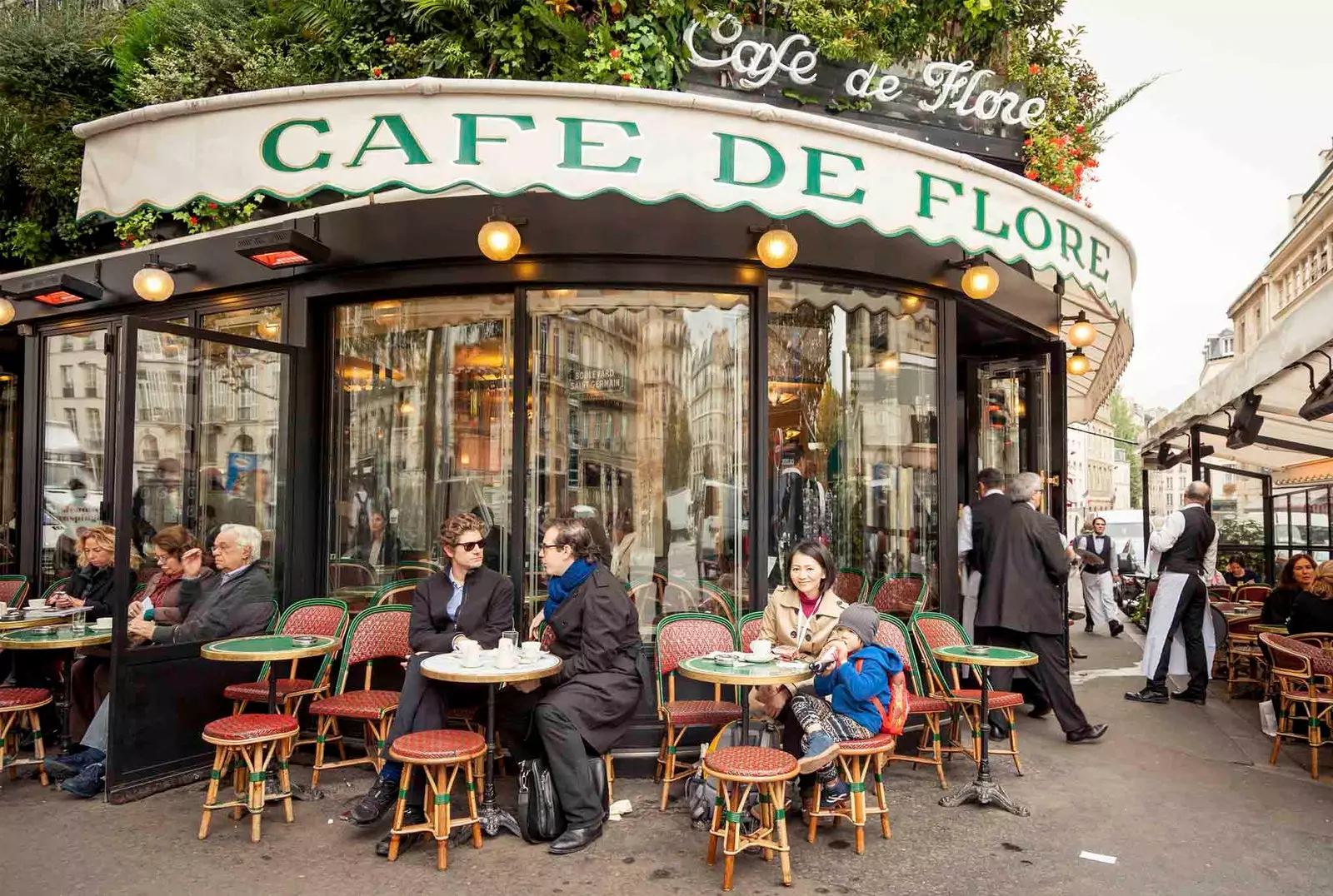
Le Cafe de Flore
Since the 1980s, it belongs to Miroslav Siljegovic, also owner of the Closerie des Lilas , and in 1994, Frédéric Beigbeder created the Flower Prix , which rewards a young promise of literature with a sum of money and a glass of white wine Pouilly Fumé millésimé for a year.
Today, its terrace is an enclave to "see and be seen"; a medley of Parisian dandies, old glories and foreigners at tiny tables, cooling off with Perrier-rondelle.
THE LILAC CLOSERIE , 171 boulevard du Montparnasse, 75006
At the end of the 19th century it was one of the best-known guinguettes in Paris for its famous or bullier dance and its pleasant garden of lilacs, where the bourgeoisie was channeled. they frequent her Zola, Cézanne, Théophile Gautier and the Goncourt brothers.
After this, it became a café, an international think tank, enjoying the loyalty of Paul Fort, Lénine, André Gide, Oscar Wilde, Ingres, Modigliani, Verlaine, Man Ray, Gainsbourg or Dali, who spent long hours exchanging opinions, playing chess and fixing the world.
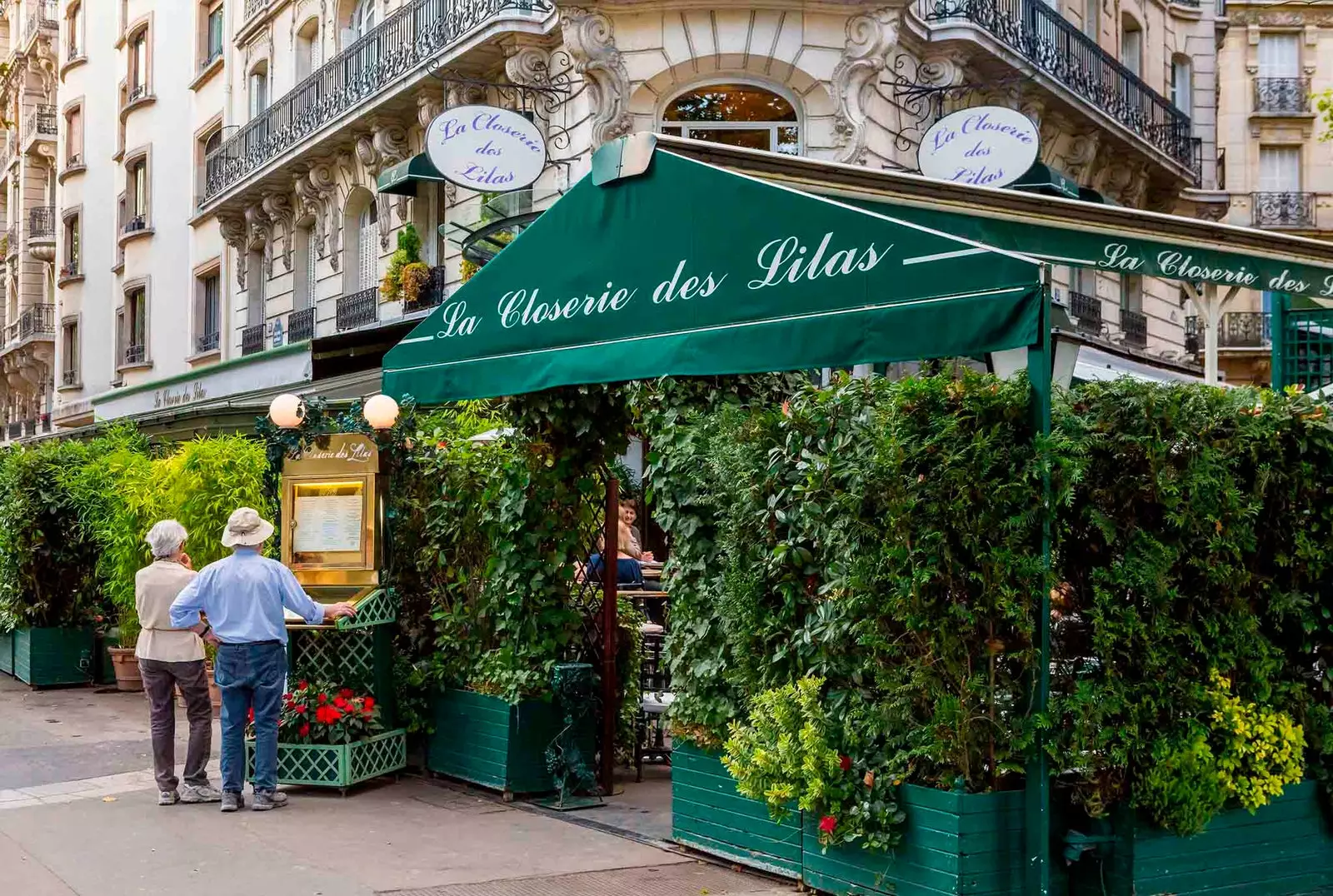
The Closerie des Lilacs
It continues to be widely accepted by gentlemen of postin who enjoy the jazz rhythm of its piano-bar or the chic atmosphere of its leafy terrace during the summer nights . Its feutré decoration is very cachet and its menu offers French dishes such as pike quenelles with crayfish and Nantua sauce or the Hemingway beef fillet, flambéed with Bourbon.
I PROCOPE , 13 rue de l'Ancienne-Comédie, 75006
Founded in 1686, by the Italian Francesco Procopio dei Coltelli, it is the first literary cafe in Paris, where his clients could sit down to have a coffee and read the press of the time -La Gazette, Le Mercure Galant- by candlelight.
Also located on the rive gauche, it was frequented by La Fontaine, Racine, Voltaire, Balzac, Bonaparte, Nerval, George Sand, Musset, Verlaine, Diderot, and d'Alembert.
Following this cultural line, in recent years it has awarded several literary prizes, such as the Prix Procope des Lumieres and the ** Cuisine bourgeoise ** Award.
Today, in this restaurant located in the beautiful passage of the Cour du Commerce-Saint-André, some **writers and travelers** from all over the world alternate, enthusiastic about tasting typical recipes such as soupe d'oignon au gratin, _ escargots de Bourgogne_ or foie gras, and relive the Parisian culture.
LIPP BRASSERIE , 151 Boulevard Saint-Germain, 75006
It was founded by the Alsatian Leonard Lipp in 1880 with the purpose of serving simple but rich quality products at low prices, such as cervelas in rémoulade sauce, sauerkraut, terrine de campagne and beer.
It attracted writers like Saint-Exupéry, as well as artists like picasso and actors of the stature of Jean-Paul Belmondo or Jean-Pierre Marielle.
Since 1935, the Brasserie Lipp has awarded the Cazes Award, aimed at authors who have not received any literary distinction, as was Marcel Jullian or Francois de Closets.
Starting in 1990, it became part of the Bertrand group and received politicians like Mitterrand , attracted by the climate and the good dishes. Its aura remains as before, and in it, the waiters circulate dressed in white aprons, black vests and a number, starting from 1, from the oldest to the last to join the "brigade".
Its atmosphere and good food continue to captivate authors, journalists and editors as well as parliamentarians, expatriates, families and figures from fashion and cinema.
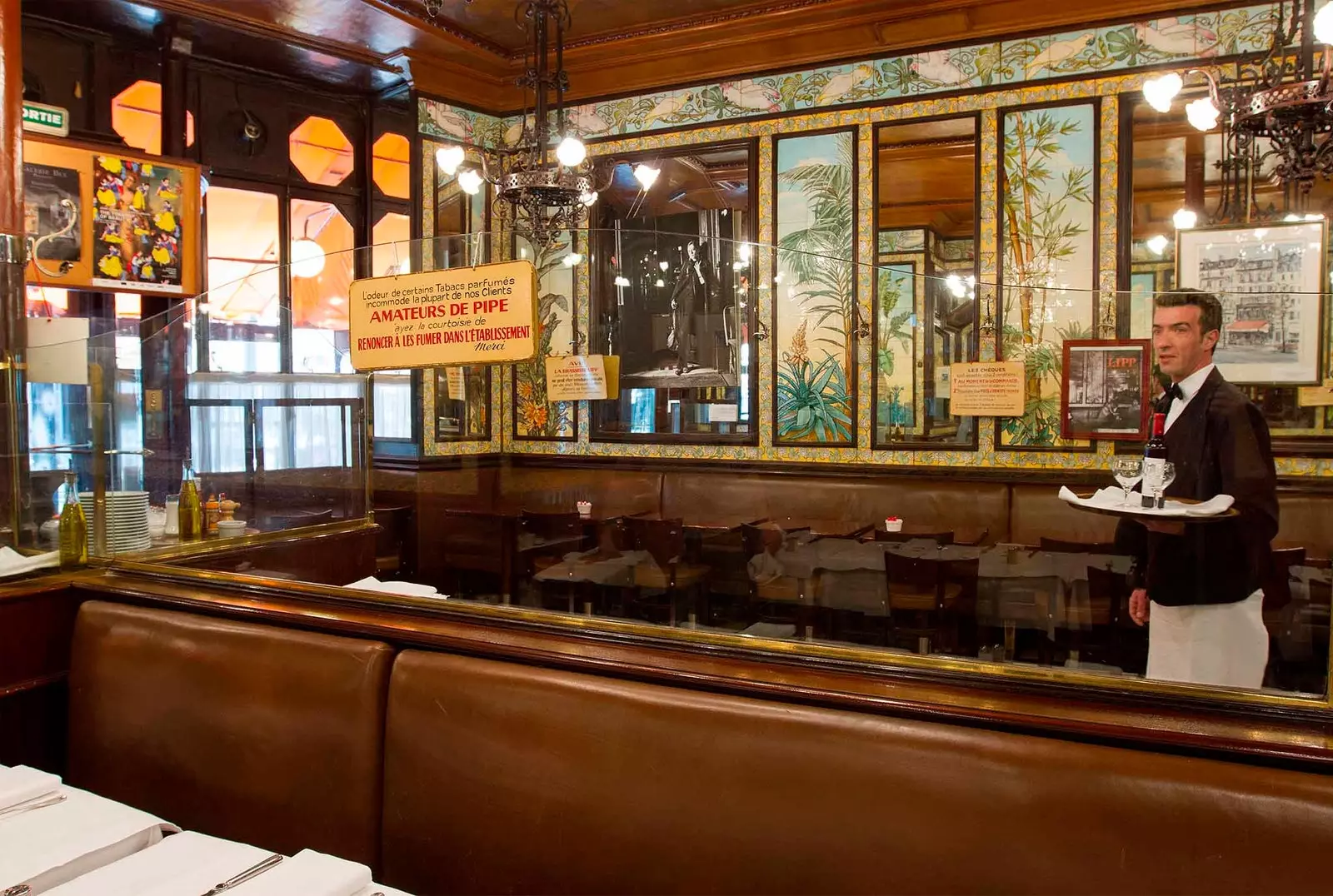
Brasserie Lipp
THE PALETTE , 43 rue de Seine, 75006
This 1902 bar-restaurant was a meeting place for students from nearby School of Fine Arts, What Cezanne, Picasso and Braque, which also attracted writers like Hemingway.
Situated in Saint-Germain-des-Pres , in the secluded rue de Seine and surrounded by art galleries, its façade and interior decoration are inscribed as historical monument and they remain as before, with their paintings and ceramics from the 30s and 40s.
The flowery terrace of this bistro maintains a certain intello atmosphere, very right-hand gauche, in which Parisian "well-kids" read their paperbacks while they show off their outfits with a nonchalant air.
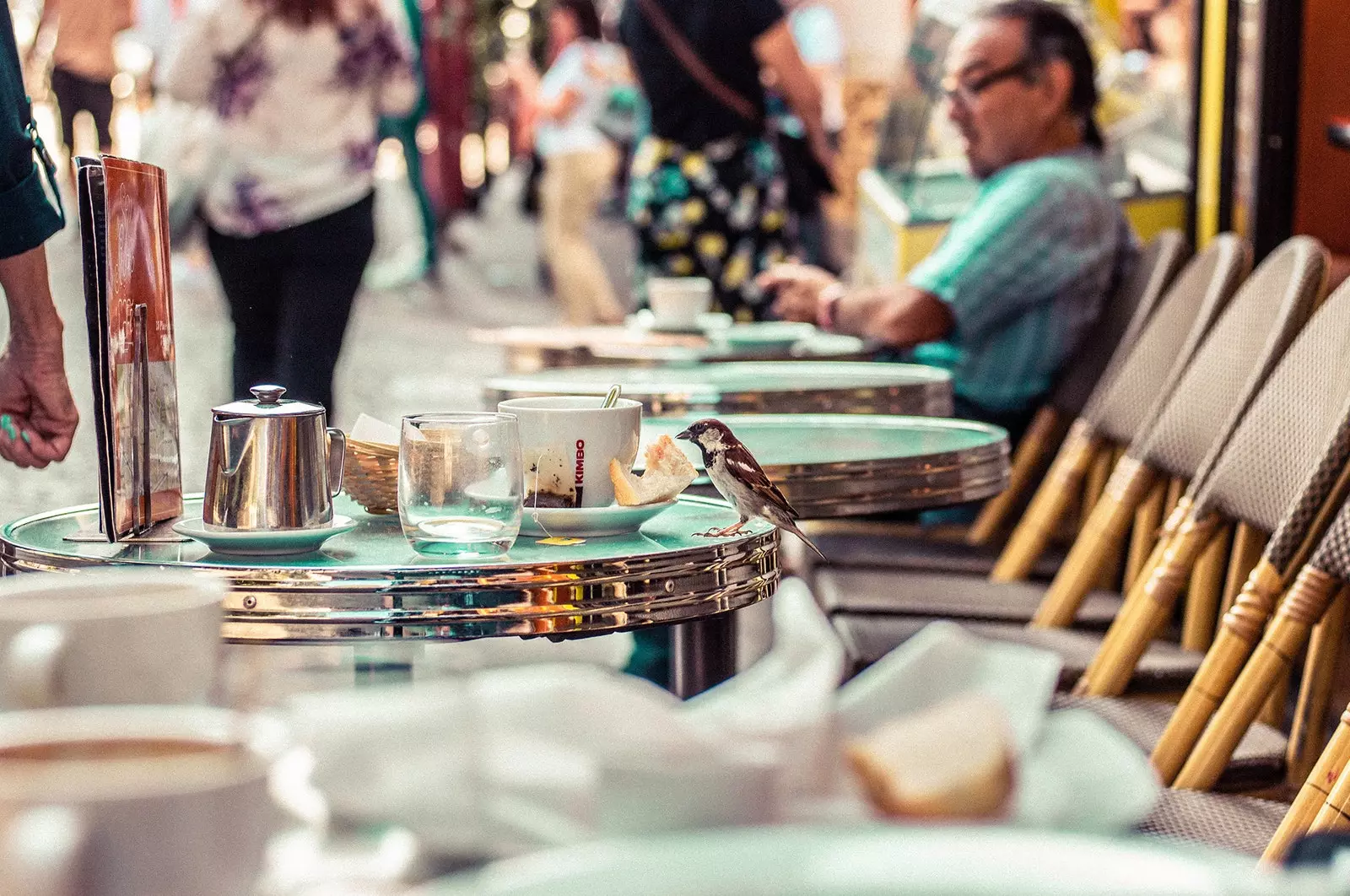
The cafes of Paris
